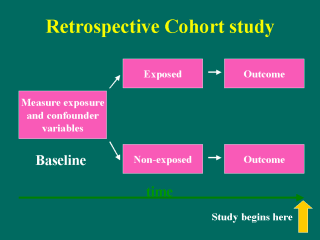 |
An alternative
form of the cohort study is something termed the retrospective cohort study.
Other researchers may also call this a historical prospective study. This
design is nearly identical to the prospective cohort study. The sequence of
baseline exposure determination and longitudinal follow-up for outcomes is
similar. The difference lies in the time in which the study begins. In this
retrospective design, the researcher constructs the cohort study by looking
back in time and placing data in the appropriate order and sequence. These
studies are possible to do with large medical databases, such as the
membership files of the Health Maintainance Organizations, or the medical
files in the Scandinavian countries.
|
